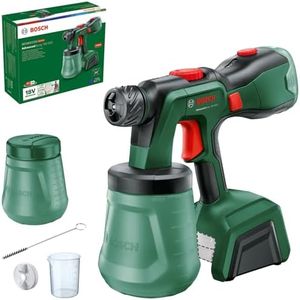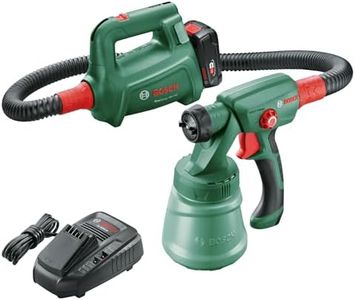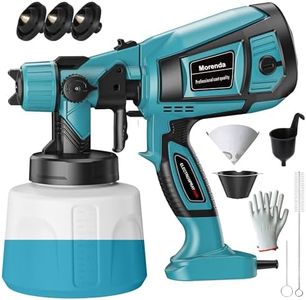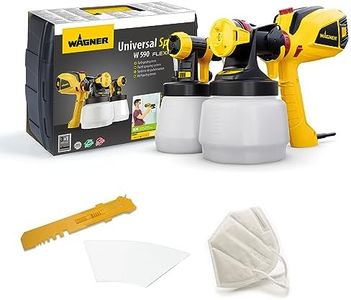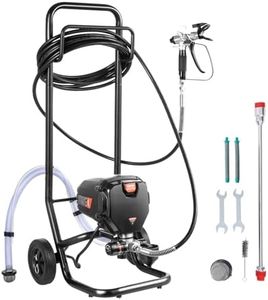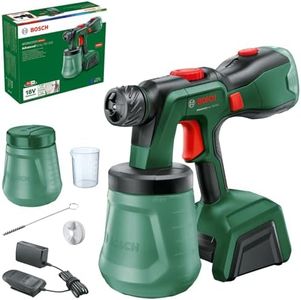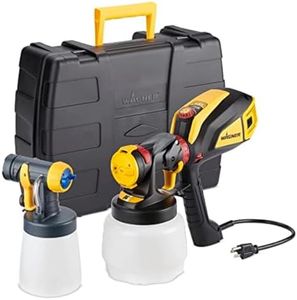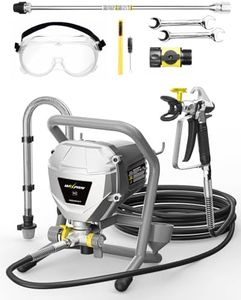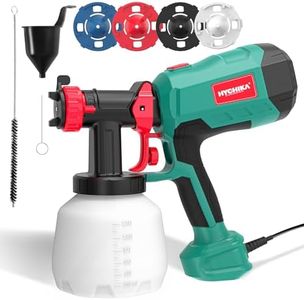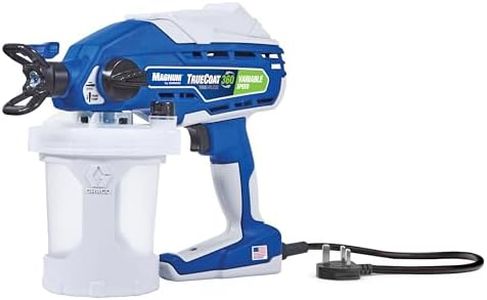We Use CookiesWe use cookies to enhance the security, performance,
functionality and for analytical and promotional activities. By continuing to browse this site you
are agreeing to our privacy policy
10 Best Paint Sprayer For Deck Stain
From leading brands and best sellers available on the web.Buying Guide for the Best Paint Sprayer For Deck Stain
Choosing a paint sprayer for deck staining can make the job a lot faster and provide a more even finish than using brushes or rollers. The right sprayer will help you cover large surfaces efficiently and get into the cracks and grooves of wood decking. It's important to consider the size of your deck, how often you plan to use the sprayer, and your comfort with different levels of equipment complexity. A good sprayer should be easy to use, easy to clean, and appropriate for the type of stain you plan to apply.Sprayer TypeThere are three main types of paint sprayers: airless, HVLP (high volume low pressure), and compressed air. Airless sprayers pump stain at high pressure directly through a nozzle, making them ideal for covering large areas quickly, like decks. HVLP sprayers use a high volume of air at low pressure and provide more control and a finer finish, but may be slower and better suited for smaller/detail work. Compressed air sprayers are less common for staining decks due to their complexity. If you have a large deck or want to get the job done quickly, airless is often the way to go. For smaller projects or if you want more control over detail, HVLP may suit your needs better.
Material CompatibilityMaterial compatibility refers to whether the sprayer can handle the type and viscosity (thickness) of stain you plan to use. Some sprayers are designed for thin, water-based stains, while others can handle thicker, oil-based products. Before purchasing, check the manufacturer's recommendations to ensure the sprayer can handle deck stains (especially semi-transparent or solid stains), to avoid clogging or uneven application. Pick a sprayer that's matched to the type of stain you plan to use most often.
Adjustable Flow and Spray PatternAdjustability lets you control how much stain comes out and the shape of the spray. This matters because different deck boards and railings may need different approaches for best coverage and minimal waste. Sprayers that allow you to change the spray width and direction (horizontal, vertical, circular) help you adapt to the size of the job and reach corners or narrow surfaces. Choose a sprayer with good adjustability if your deck has various surfaces or if you want precision.
Ease of Cleaning and MaintenanceAfter your project, it's critical to clean your sprayer properly to keep it in good working order and prevent dried stain from ruining it. Some sprayers are designed with features like detachable parts or quick flush systems, which make cleaning faster and easier. Others might have more complicated cleaning needs. If you value convenience or plan to use your sprayer more than once, look for a model that simplifies the cleaning process.
CapacityCapacity refers to how much stain the sprayer can hold before it needs a refill. Smaller sprayers might have cups that hold less paint, requiring frequent refills, while larger sprayers can connect to big containers or draw directly from a bucket. For a large deck, a sprayer with a bigger capacity or suction tube saves time. For smaller projects or decks, a compact cup may be easier to handle.
Portability and WeightPortability and weight affect how comfortable it is to use the sprayer, especially for longer staining sessions. Heavier or bulkier sprayers may be harder to maneuver, especially if you need to move around railings or stairs. Compact, lightweight models are easier to handle and less tiring, but may have smaller capacities. Consider your physical comfort and how much moving you'll need to do.
